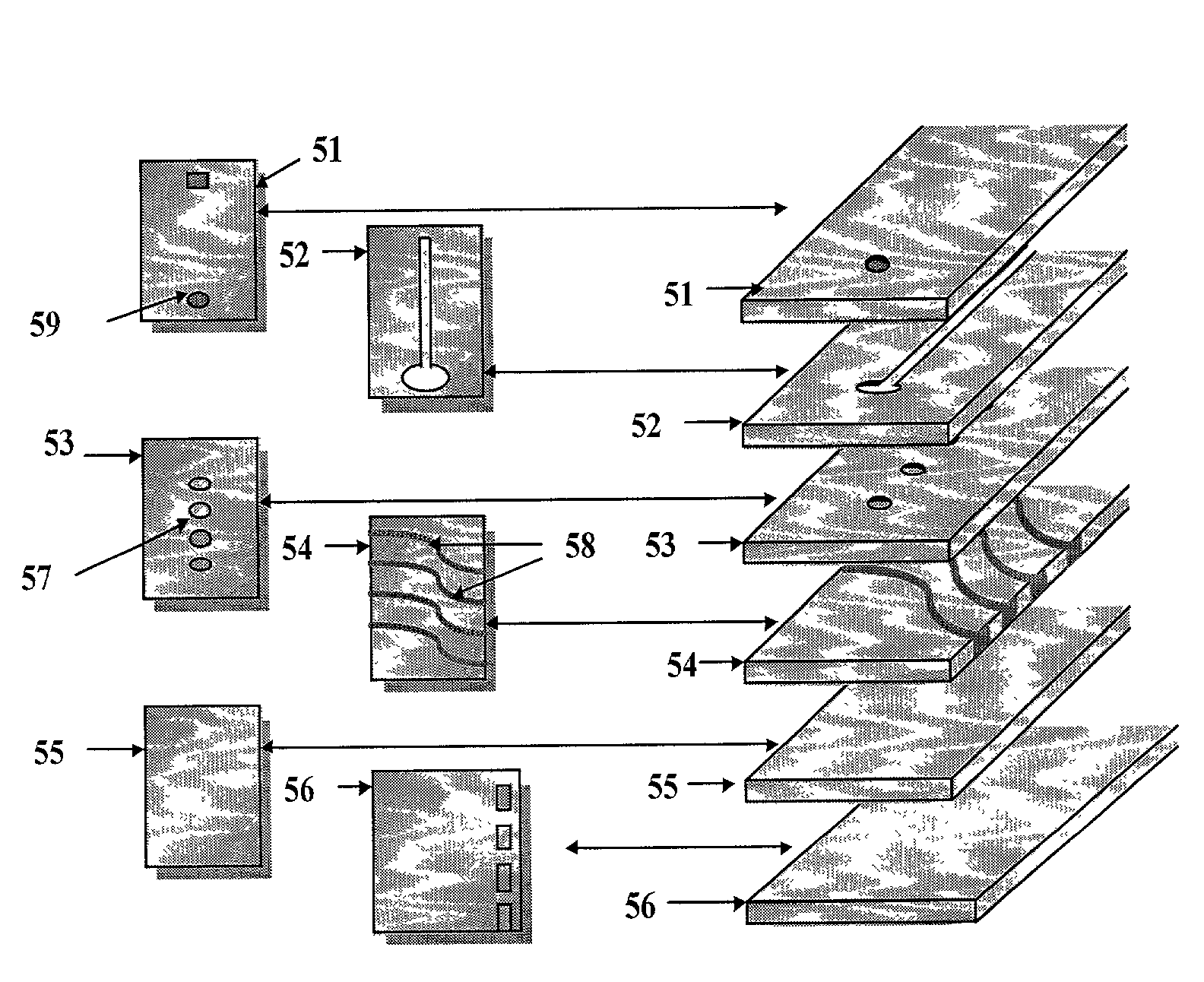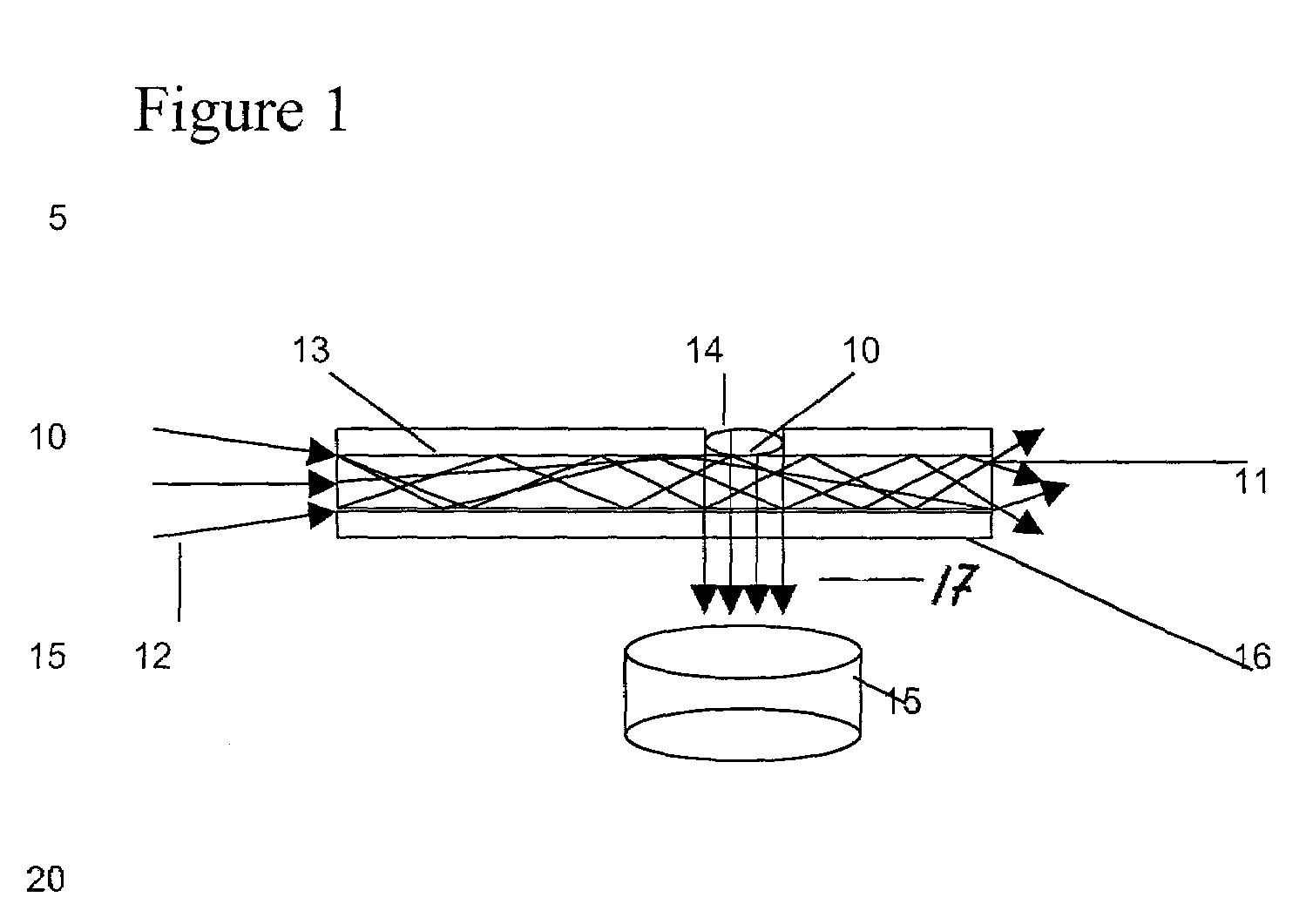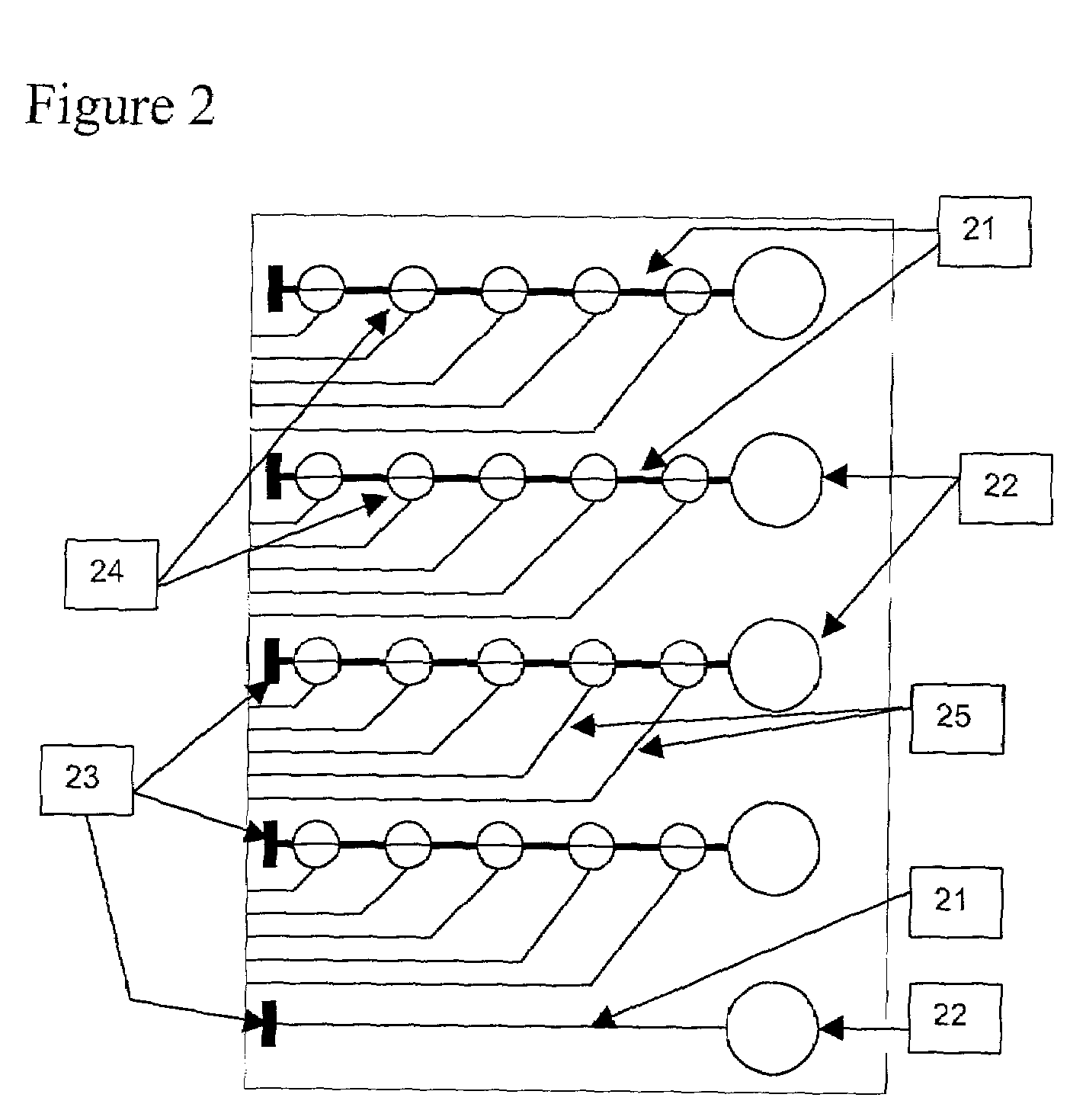Micro-array evanescent wave fluorescence detection device
a fluorescence detection and microarray technology, applied in the field of detection of molecules, can solve the problems of affecting cell or protein function, manual and time-consuming, sample preparation currently represents a major component of time, labor and cost in sequencing, and achieve the effect of detecting advantageously
- Summary
- Abstract
- Description
- Claims
- Application Information
AI Technical Summary
Benefits of technology
Problems solved by technology
Method used
Image
Examples
example
[0111]Prototype chemical sensor waveguide devices were created by bonding a glass fiber optic wire to a flat polymer waveguide. The flat polymer material used for the waveguide is described in Table 1 of U.S. Pat. No. 5,402,514 fully incorporated herein by reference. A fiber optic wire was disposed in such a way that emitted light would be coupled or launched into the waveguide and travel through the waveguide generally parallel to the surface of the waveguide. The other end of the fiber optic wire was attached to a helium-neon laser light source. Therefore, the light was transmitted through the fiber optic wire and entered the polymer waveguide. Red light from the helium-Ne laser was visible inside the waveguide. A cladding layer of cellulose acetate butyrate (“CAB”) with a refractive index lower than that of the polymer waveguide material was bound to liquid polyguide material at one side of the waveguide. A cladding layer of CAB was bound to the other side of the flat polymer wav...
PUM
| Property | Measurement | Unit |
|---|---|---|
| time | aaaaa | aaaaa |
| volume | aaaaa | aaaaa |
| volume | aaaaa | aaaaa |
Abstract
Description
Claims
Application Information
 Login to View More
Login to View More - R&D
- Intellectual Property
- Life Sciences
- Materials
- Tech Scout
- Unparalleled Data Quality
- Higher Quality Content
- 60% Fewer Hallucinations
Browse by: Latest US Patents, China's latest patents, Technical Efficacy Thesaurus, Application Domain, Technology Topic, Popular Technical Reports.
© 2025 PatSnap. All rights reserved.Legal|Privacy policy|Modern Slavery Act Transparency Statement|Sitemap|About US| Contact US: help@patsnap.com



